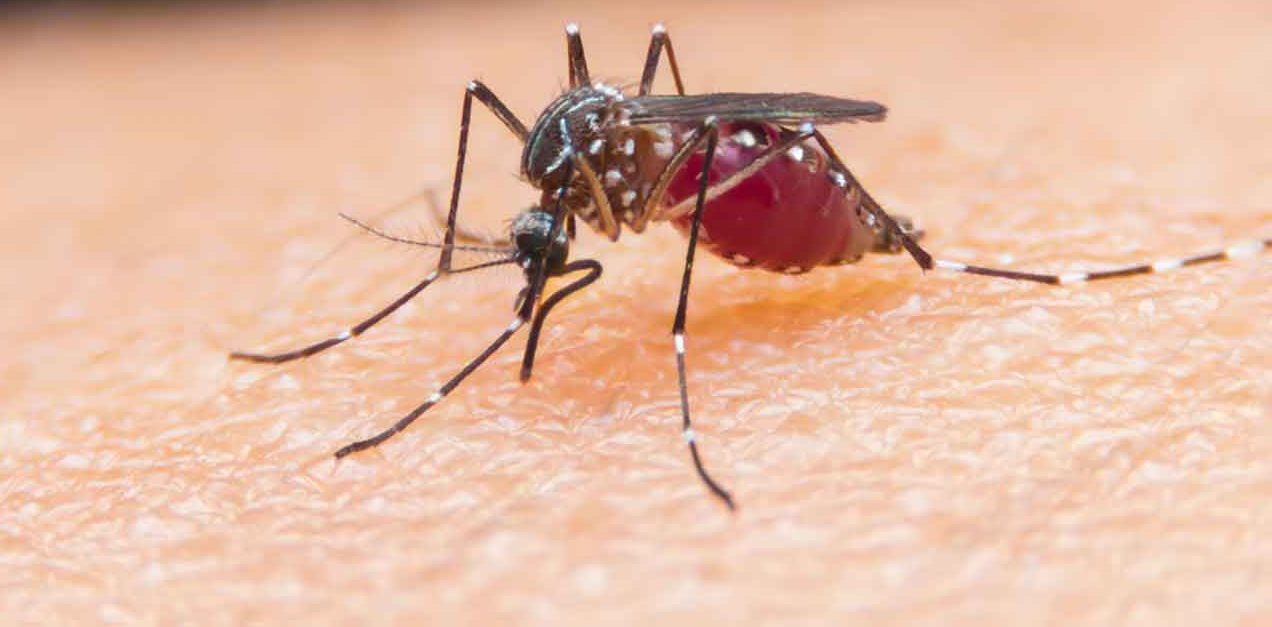Do Cardinals Reduce the Spread of West Nile Virus?

Cardinals may be "super-suppressors" of West Nile virus, helping protect humans from the virus. Robins, meanwhile, may no longer be "super-spreaders.
West Nile virus has sickened more than 50,000 Americans since it was first reported in the U.S. in 1999. Although it mostly causes mild flu-like symptoms, the virus can result in rare life-threatening neurological complications, according to the Centers for Disease Control and Prevention (CDC).
West Nile-carrying mosquitoes spread the virus to birds, as well as to humans, through bites. The disease is known to circulate between birds and mosquitoes, then infected mosquitoes bite humans, producing what disease experts call a “spillover infection.” But scientists studying how West Nile virus is transmitted discovered something unexpected and puzzling.
YOU MIGHT ALSO LIKE: DIY Mosquito Control
In places where the virus is rampant in birds and mosquitoes, human infections are sometimes unusually low. On the other hand, more people come down with West Nile virus infections in some areas where there is relatively little circulating virus.
Researchers from Emory University, the University of Georgia, Texas A&M University, and the Georgia Department of Transportation followed environmental clues to solve this mystery. Their study reached a surprising conclusion that is, literally, for the birds — cardinals, to be exact.
Tests on birds around metro Atlanta showed high rates of West Nile infection. In all, about one-third of birds in the area were exposed to the disease. But the infection rate for Atlantans was low. In fact, records going back to 2001 show the West Nile infection rate in all of Georgia is unusually low, only about 3.3 per 100,000 people. The researchers noted this pattern of many West Nile infected birds and mosquitoes but few human cases also occur in other parts of the Southeast.
For about three years, the investigators collected samples of mosquitoes and birds around Atlanta and tested them for the virus. They also ran DNA analyses of the mosquitoes' blood meals to identify what type of birds the insects had bitten.
The Emory researchers were especially interested in the role American robins played in spreading West Nile. The birds have long been identified as "super-spreaders" of the virus because mosquitoes seem to like biting robins especially, feeding off the birds’ blood.
But the scientists discovered robins were no longer “super-spreaders” of West Nile in Atlanta.
"What we found is that, for some unknown reason, around the middle of July, mosquitoes in Atlanta seem to decide that they have had their fill of robins, and they switch to feeding on cardinals," said Rebecca Levine, PhD, the lead author of the study who conducted the research while at Emory University and an epidemiologist with the CDC’s Division of Parasitic Diseases and Malaria.
"But cardinals, even though they can be infected with West Nile virus, are much less likely to have enough virus circulating in their blood to transmit the disease back to feeding mosquitoes. That is why we called them 'super-suppressors.’"
The change in mosquitoes’ appetite for robin blood takes place in summer, when mosquito populations increase and West Nile virus would normally be expected to spread. But when mosquitoes go after cardinals, “super-suppressors” of the virus, the result is fewer cases of West Nile in Atlanta and possibly other places with large cardinal populations.
The researchers found mockingbirds, brown thrashers, and gray catbirds around Atlanta also have a high rate of exposure to West Nile virus. Previous studies suggested gray catbirds and brown thrashers, like cardinals, suppress West Nile, so they may possibly play a role in preventing transmission of the virus to people, too.
There are likely numerous other factors that impact how West Nile spreads between birds and mosquitoes and then humans. A case in point: Levine and colleagues discovered bird populations living in small patches of old growth forest tend to have less West Nile virus exposure than other birds.
"So, we might find that keeping old growth forests intact, even in urban areas, can provide more than just an interesting piece of history," said Levine. "Ultimately, if we can identify certain features of the local ecosystem that help prevent disease transmission, then we can consider preserving and enhancing them."
Updated:
November 27, 2023
Reviewed By:
Janet O’Dell, RN